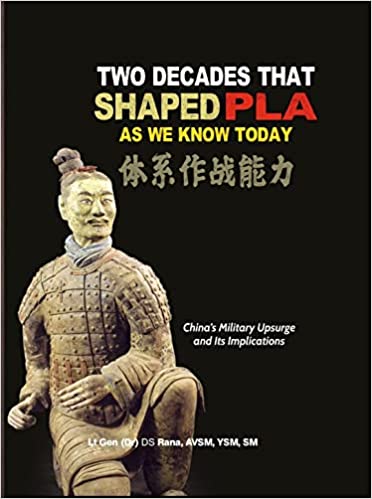Russia should closely follow the integration initiatives recently under discussion in the Asia-Pacific Region (APR). That is of paramount importance if Russia is to successfully aim its Far East strategy at the Asian integration structures whose collaboration would be most beneficial to Russia, to ensure effective integration in the region’s economy. One of such promising structures is the People’s Republic of China (PRC)–Japan–South Korea Free Trade Zone, whose creation was announced on 13 May 2012.
After a decade of negotiations, the three Northeastern Asia (NEA) leading economies have come to a decision to create a free trade zone (FTZ), thus closing the long-lasting discussions as to the reasons why this sub-region remains the only one in the world seemingly untouched by the ‘fever’ of regionalism. On May 13, at the trilateral meeting held in Beijing, the leaders of China, Japan, and South Korea announced their readiness to commence the negotiations on the FTZ before the end of 2012. The three countries see the economic impetus to creating such an integration group in the complementary, rather than competitive, nature of their economies. It is noteworthy that it will not be agreements on mitigating or eliminating barriers in the pricing policy and other spheres, but rather the agreement on mutual investment promotion and protection that will serve as the basis for creating the FTZ that will include these powerful Asian economies. It can be viewed both as an indication of the founding states’ serious intentions and a bold statement declaring the three countries’ plan to start from a higher level of their economies’ mutual integration, which is thought to be a development meeting the interests of the entire Asian region.
There have long existed fairly weighty prerequisites for the FTZ creation. Among them there is the countries’ rapidly growing economic potential and high development rates in the 1990s – 2000s (with the exception of Japan). The three countries’ cumulative GDP is currently in excess of 15 trillion dollars. These countries have accumulated the world’s largest currency reserves, which in 2011 reached almost 5 trillion dollars. In 2010, Republic of Korea, China, and Japan reached agreement on the creation of a joint stabilization fund, which was one of the eight joint financial initiatives to be implemented by the three states.
At the same time, there are some specific points and certain barriers in the integration process with regard to these countries’ trade cooperation. In terms of their mutual trade integration, in 1999–2011 the three countries’ cumulative commodity turnover grew from 130 billion to 690 billion dollars. The People’s Republic of China is Japan’s and South Korea’s largest trade partner, while Japan and South Korea are among China’s top five foreign trade partners. For PRC, the volume of trade with the other two countries in the trio amounts to approximately 20%, for Japan – over 30%, and for South Korea – over 60%.
China’s transition to innovation development intensifies the competitive struggle between the goods manufactured in PRC and those produced in Japan and South Korea. The diminishment of the countries’ mutual complementarity and higher competition intensity are factors resulting in disparity between China’s defining role for South Korea and Japan, on the one hand, and the significance of foreign trade ties with these two countries for PRC, on the other. This leads to an imbalance of trade interests and may potentially cause significant problems for the Republic of Korea and Japan in the future, in the process of negotiating the common pricing policy, etc.
The People’s Republic of China, Japan, and the Republic of Korea have arrived at a common view on the necessity of activating regional financial and economic cooperation, approved the idea of strengthening their national currencies’ convertibility, and declared their willingness to promote mutual investment exchange and expand access to the necessary relevant information. According to the three countries’ experts, those measures are necessary in the situation of vulnerability and possible downturn of the global economy. Joint efforts should be directed towards the implementation of such adequate economic measures as budget consolidation, domestic demand and employment stimulation, as well as acceleration of economic reforms and achievement of active, well-balanced, and progressive economic development.
What Benefits Are Pursued by Member States of New NEA Triumvirate?
The common ground for the interests of all the three countries, although to varying degree, is the desire to gradually decrease their dependence on the US markets and influence of the US currency, i.е. all the three participating countries are interested in the possibility of lessening the pressing influence of the American factor on the development of the NEA region.
Let us begin with the People’s Republic of China (PRC) because it is not only the most economically powerful state in the currently formed trilateral group, but, in our opinion, it is also the country with the most interest vested in the formation of the said group. Beijing is given a very real opportunity to prove the validity of its ambitions for recognizing the RMB (Ren Min Bi) as the key regional currency. China is promoting the project for creating the China-Japan-South Korea FTZ even though it may become a serious competitor to the already existing PRC-ASEAN FTZ. For China, the main and most attractive bonus of the NEA trilateral project is Japan’s and South Korea’s more powerful economic and technological resources. The People’s Republic of China is also in the process of active integration with South Korea. On 2 May 2012, Seoul and Beijing announced the commencement of negotiations on preparing a bilateral free trade agreement. Both in the bi- and trilateral format, China’s and South Korea’s most ‘sensitive’ industries will be agriculture and fishing industry (for South Korea), car-making and machinery engineering, as well as oil industry (for PRC).
With regard to Japan’s interests, the implementation of the PRC–Japan–South Korea project will give Tokyo the opportunity to expand its political and economic positions, as well as protect the interests of the country ‘jammed’ between the United States striving to maintain its dominating global position and China striving to take over the US position in the world. As a US strategic ally, Japan is also under significant economic pressure from the People’s Republic of China and Republic of Korea. For Tokyo, the main attraction lies in the financial and investment aspects of the integration process; Japan would most likely prefer to start the process with the regional currency integration. That would provide yet another impetus to stimulate and accelerate Japan’s economic growth.
South Korea is an active supporter of the three countries’ common market idea, and it intends to sign additional free trade agreements with the People’s Republic of China and Japan. South Korea believes that the new format of the economic relations between Seoul, Beijing, and Tokyo might also have a positive effect on the NEA region’s security, since China and Japan are going to be interested in a politically stable Korean Peninsula. South Korea expects to gain expanded access to China’s and Japan’s markets, but, more importantly, it has high hopes for expanding innovation and technology collaboration with these two countries. In 2011, the volume of bilateral trade between South Korea and China amounted to 246 billion dollars, while the volume of bilateral trade between South Korea and Japan was 108 billion dollars.
Obstacles to PRC–Japan–South Korea Integration
Speaking of obstacles to the integration of the three countries, the following aspects should be pointed out: first of all, the enduring legacy of the past, which manifests itself both in offenses taken with regard to the coverage of each country’s history of relations with the other two countries and their mutual territorial claims against each other. Secondly, as it was previously stated, a closing gap in the economic development levels and similar economic development strategies lead to the competition of interests. In the cultural area, such obstacles are less pronounced, and globalization actually results in the interpenetration of national cultures creating the so-called ‘Asian waves’. However, the peoples of these countries still have a historically conditioned bias against each other, which is being gradually overcome as the countries are expanding their collaboration. Japan, which previously shunned playing an active role in APR due to the historic circumstances caused by the mistakes of the past, is now hoping to overcome the misunderstanding problems with its neighbors and to become a ‘bridge’ connecting Asian countries. China, which previously played the modest role of a country striving to keep up, is beginning to implement an expansion policy. Obviously, the fact that both the Chinese and the Japanese will attempt to establish and develop the new integrated group primarily with their own interests in mind, as well as ‘play first fiddle’ in it, may become a serious obstacle to the successful integration process. In the situation where this project’s numerous aspects remain unclear, it is difficult to forecast the timeframe for the introduction of the common currency, although the project participants have repeatedly declared their intentions in that regard.
New Integration Model’s ‘Niche’ in APR
The situation in APR is currently determined by two most notable and significant initiatives linking to the plans to create Asia-Pacific Community (APC) by 2020 and East Asian Community (EAC). China’s strengthened position in APR is a source of concern for the USA, Japan, and Australia. At the same time, the People’s Republic of China considers the strategy of the USA returning to Asia (Trans-Pacific Partnership Agreement, November 2011) to be a hard blow to its economy’s competitiveness. At present, it appears impossible to avoid the competition between the China–ASEAN free trade model and the Trans-Pacific Partnership model. The trilateral integration model may further strengthen China’s positions in Asia and act as a balancing force in the relations between the countries so vastly different in terms of their size, population, economic influence, culture, and political system.
Trilateral Integration Group and Russia
Russia is in the process of gradually recognizing the NEA integration for its innovation development opportunities for Russia, in the spirit of the government’s declared policy of modernization and elimination of raw-material dependence. On the one hand, Russia’s involvement and possible participation in the currently formed new trilateral integration system would provide an additional impetus for the country’s development, particularly, its Far East region, since all the three participating countries’ economies are mutually complementary with Russia’s economy in terms of raw materials and resources. On the other hand, Russia’s distant position, as well as the unwillingness of the trilateral group’s members to accept Russia, may have negative impact on the implementation of plans for the country’s modernization acceleration and strengthening its leading positions in the Asia-Pacific region.




